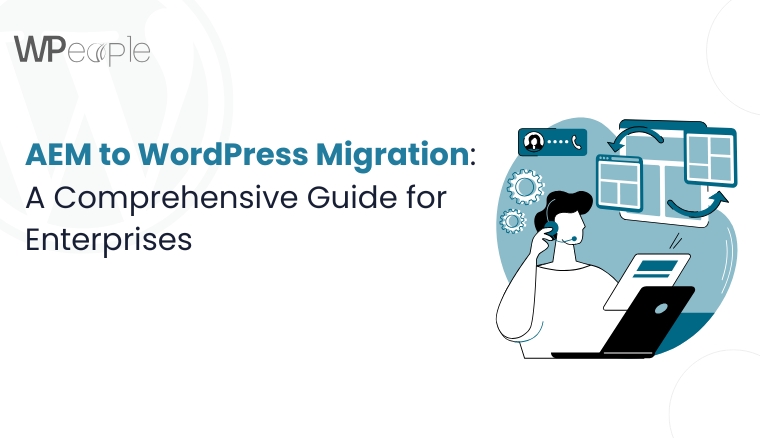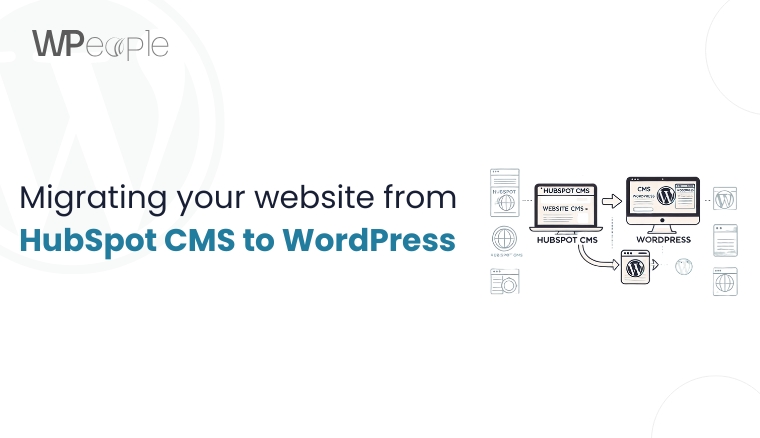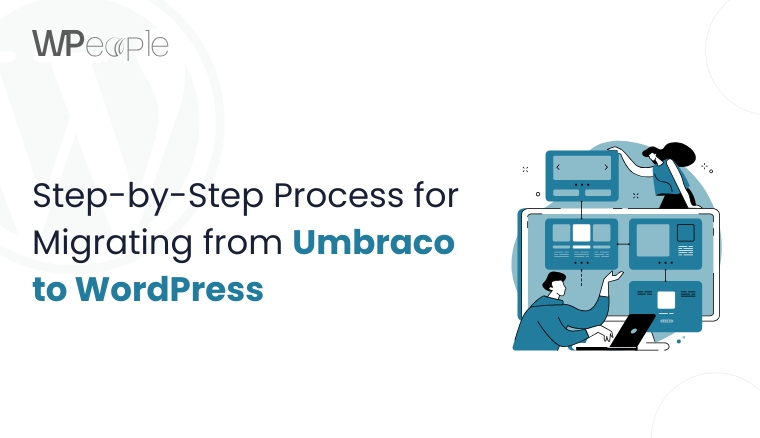
Migrating a website from Umbraco to WordPress requires careful planning and execution to ensure a smooth transition while maintaining your content, SEO value, and user experience. This comprehensive guide will walk you through the entire migration process, from initial preparation to post-migration tasks.
Understanding the Migration Challenge
Umbraco and WordPress are both powerful content management systems, but they have different architectures, data structures, and content models. The main challenges in migration include:
- Preserving content hierarchy and relationships
- Maintaining URL structures and redirects
- Transferring media files and assets
- Converting custom data types to WordPress equivalents
- Preserving SEO rankings and metadata
- Ensuring consistent user permissions and roles
Pre-Migration Phase
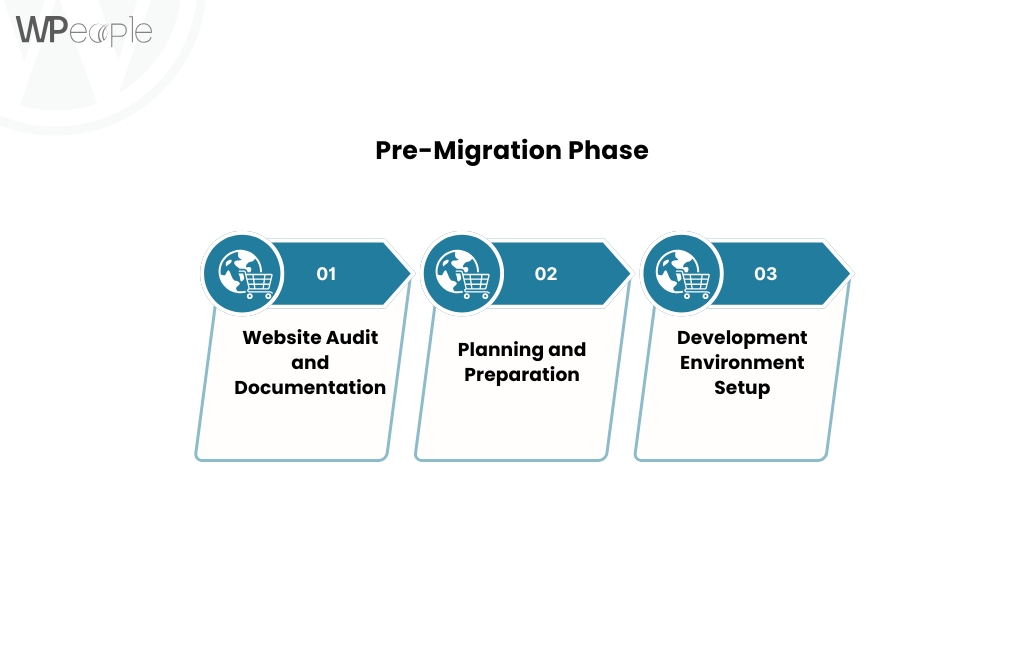
1. Website Audit and Documentation
Before beginning the migration, conduct a thorough audit of your Umbraco website:
- Document all content types and their properties
- Map out the content structure and hierarchy
- List all templates and their corresponding layouts
- Inventory all media files and their usage
- Document all URL structures and patterns
- Catalog all forms and interactive elements
- List all installed packages and their functionality
- Document all custom functionality and integrations
2. Planning and Preparation
Create a detailed migration plan that includes:
- Timeline and milestones
- Content mapping strategy
- URL redirect strategy
- Testing methodology
- Backup procedures
- Rollback plan
- Post-migration tasks
3. Development Environment Setup
Set up your development environment:
- Install WordPress on a development server
- Configure development tools and plugins
- Set up version control
- Create a staging environment
- Install necessary WordPress plugins for migration
Migration Process
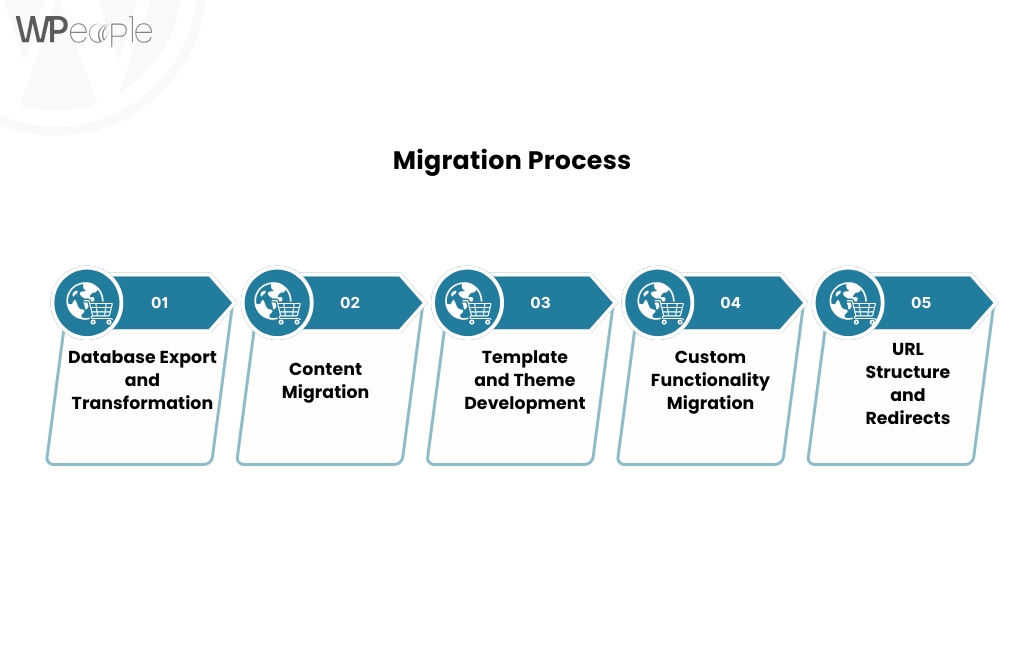
1. Database Export and Transformation
Export your Umbraco database:
sql
— Export Umbraco content nodes
SELECT * FROM cmsContent
— Export document types
SELECT * FROM cmsContentType
— Export media items
SELECT * FROM cmsMedia
Transform the exported data:
- Convert Umbraco document types to WordPress post types
- Map Umbraco properties to WordPress meta fields
- Transform content relationships
- Convert date formats
- Handle special characters and encodings
2. Content Migration
2.1 Migrating Pages and Posts
Create a migration script to:
- Map Umbraco document types to appropriate WordPress post types
- Convert Umbraco properties to WordPress custom fields
- Preserve page hierarchy and order
- Maintain content relationships
- Transfer meta descriptions and SEO data
2.2 Media Migration
Handle media files:
- Export media files from Umbraco media folder
- Upload files to WordPress media library
- Update media references in content
- Preserve file names and metadata
- Handle image sizes and thumbnails
2.3 User Migration
Transfer user data:
- Map Umbraco user roles to WordPress roles
- Export user accounts and profiles
- Import users while maintaining passwords
- Preserve user permissions and capabilities
3. Template and Theme Development
Create WordPress templates:
- Analyze Umbraco templates and partial views
- Design equivalent WordPress theme structure
- Convert Umbraco macros to WordPress shortcodes
- Implement responsive design patterns
- Optimize for performance
4. Custom Functionality Migration
Handle custom features:
- Identify WordPress plugins for standard functionality
- Develop custom plugins for unique features
- Convert Umbraco surface controllers to WordPress actions
- Migrate custom forms and handlers
- Implement API integrations
5. URL Structure and Redirects
Maintain SEO value:
- Document all existing URLs
- Create URL mapping table
- Implement 301 redirects
- Update internal links
- Preserve URL parameters and query strings
Testing and Quality Assurance
1. Content Verification
Check migrated content:
- Verify all pages and posts
- Check formatting and styles
- Validate media attachments
- Test internal links
- Verify meta descriptions and SEO data
2. Functionality Testing
Test all features:
- Forms and interactive elements
- Search functionality
- User authentication
- Custom functionality
- API integrations
- Performance and loading times
3. Cross-browser and Mobile Testing
Ensure compatibility:
- Test on major browsers
- Verify responsive design
- Check mobile functionality
- Validate forms on all devices
- Test media playback
Post-Migration Tasks
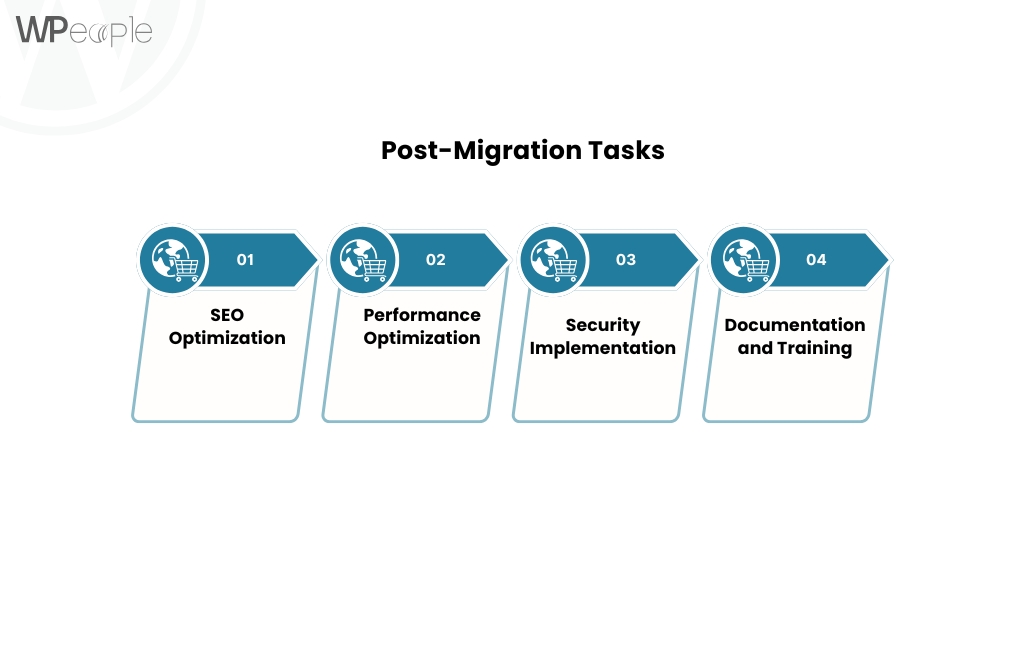
1. SEO Optimization
Maintain search rankings:
- Update XML sitemap
- Submit sitemap to search engines
- Verify redirect implementation
- Check robots.txt configuration
- Monitor search console for errors
2. Performance Optimization
Optimize the website:
- Configure caching
- Optimize images
- Minify CSS and JavaScript
- Enable compression
- Implement CDN if needed
3. Security Implementation
Secure the website:
- Update WordPress core
- Install security plugins
- Configure SSL certificate
- Set up firewall rules
- Implement backup solution
4. Documentation and Training
Prepare documentation:
- Create user guides
- Document custom functionality
- Provide training materials
- Record video tutorials
- Schedule training sessions
Common Challenges and Solutions
1. Content Type Differences
Challenge: Umbraco and WordPress handle content types differently.
Solution:
- Use Custom Post Types in WordPress
- Implement Advanced Custom Fields
- Create custom taxonomies
- Use meta fields for additional data
2. Template Conversion
Challenge: Converting Umbraco templates to WordPress themes.
Solution:
- Use WordPress template hierarchy
- Implement partial templates
- Convert macros to shortcodes
- Use template parts for reusable elements
3. Custom Data Types
Challenge: Handling Umbraco-specific data types.
Solution:
- Map to WordPress custom fields
- Use appropriate field types
- Implement custom meta boxes
- Create custom widgets if needed
Best Practices and Tips
- Always work with a backup of your Umbraco site
Backing up your site ensures you have a safety net in case something goes wrong during migration. It allows you to restore your site to its previous state without losing critical data. - Use a staging environment for testing
A staging environment mirrors your live site, providing a safe space to test changes without affecting users. This helps identify and fix issues before they impact the production environment. - Implement progressive migration when possible
Progressive migration involves moving parts of your site incrementally, reducing risks and allowing for easier troubleshooting. This approach minimizes downtime and ensures a smoother transition. - Document all changes and configurations
Keeping detailed records of every change and configuration helps maintain clarity and accountability. It also serves as a reference for future updates or troubleshooting. - Monitor performance during migration
Regularly monitoring performance helps detect bottlenecks or errors early in the process. This ensures the migration does not negatively impact site speed or user experience. - Keep stakeholders informed of progress
Regular updates to stakeholders build trust and ensure everyone is aligned. Clear communication helps manage expectations and avoids misunderstandings. - Plan for a content freeze during final migration
A content freeze prevents new updates from being made during the final stages of migration, ensuring data consistency. This reduces the risk of conflicts or data loss. - Test thoroughly before going live
Comprehensive testing ensures all components of the site function as expected after migration. This step is critical to avoid post-launch issues and ensure a seamless user experience.
Monitoring and Maintenance
After migration:
- Monitor website performance
- Check for 404 errors
- Review search console reports
- Update redirects as needed
- Optimize database regularly
- Keep plugins updated
- Monitor security logs
- Backup regularly
Conclusion
Migrating from Umbraco to WordPress requires careful planning, attention to detail, and thorough testing. While the process can be complex, following this guide will help ensure a successful migration. Remember to:
- Plan thoroughly before starting
- Document everything
- Test extensively
- Monitor post-migration
- Train users on the new system
With proper execution, your WordPress site will maintain all the functionality of your Umbraco site while providing the benefits of WordPress’s extensive ecosystem and user-friendly interface.
Consult with Our WordPress Experts On:
- WooCommerce Store
- Plugin Development
- Support & maintenance



